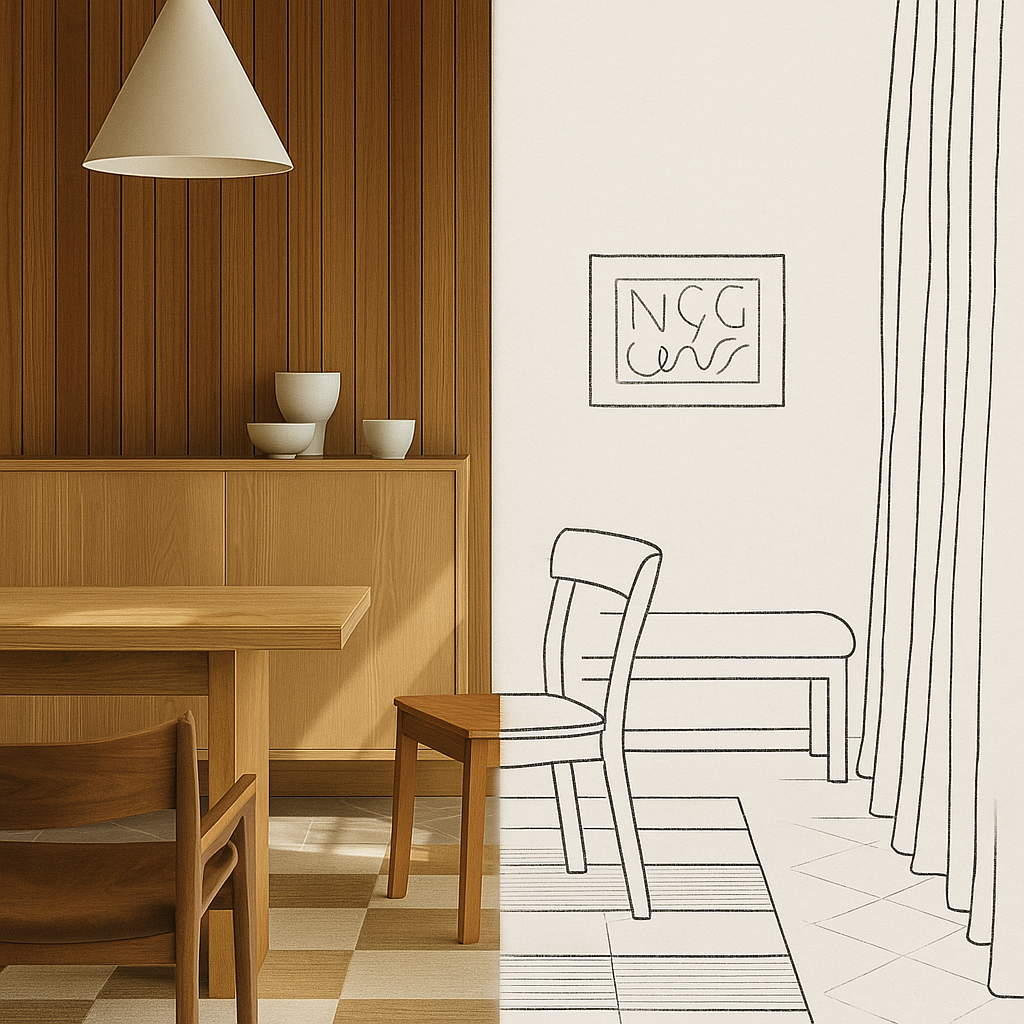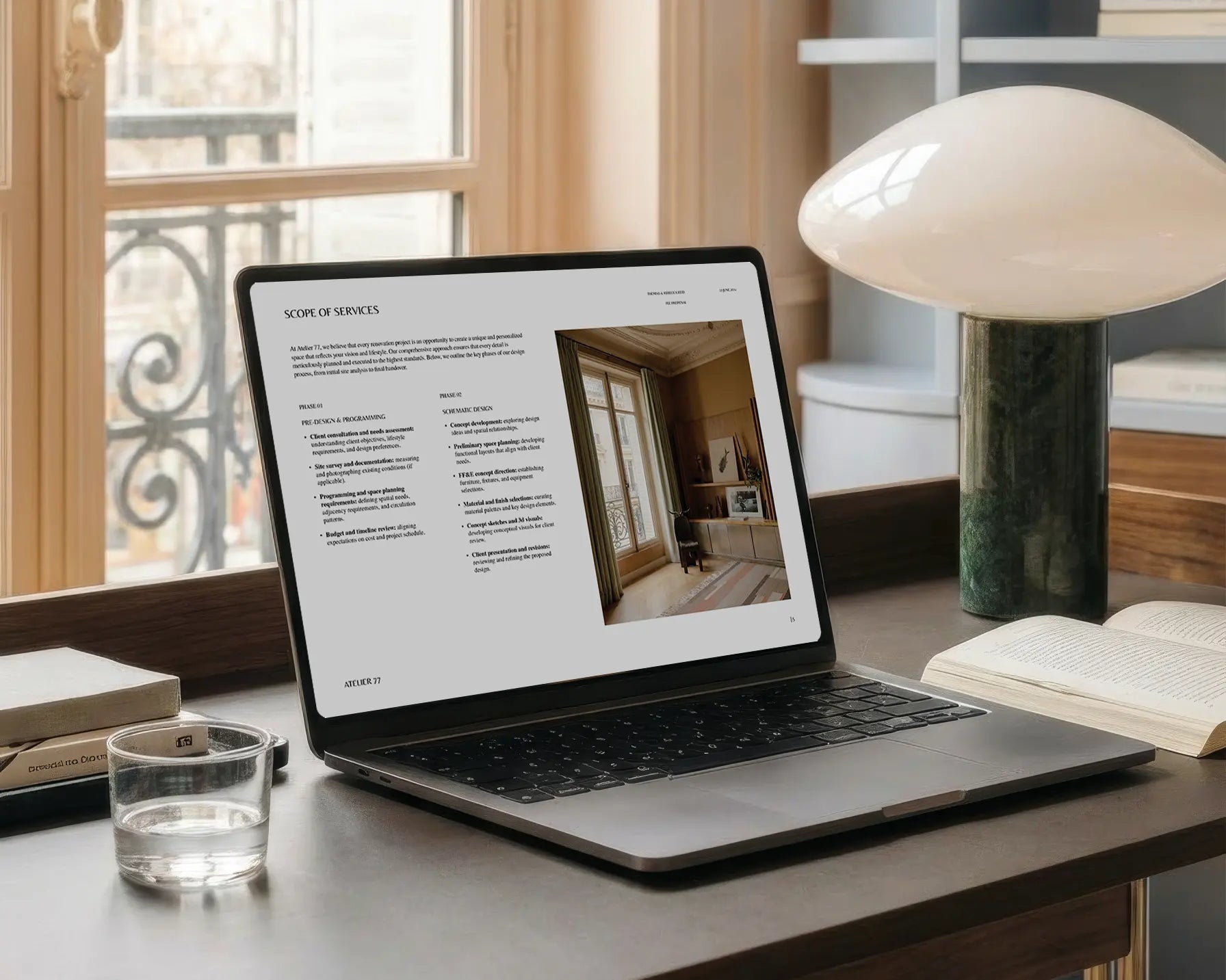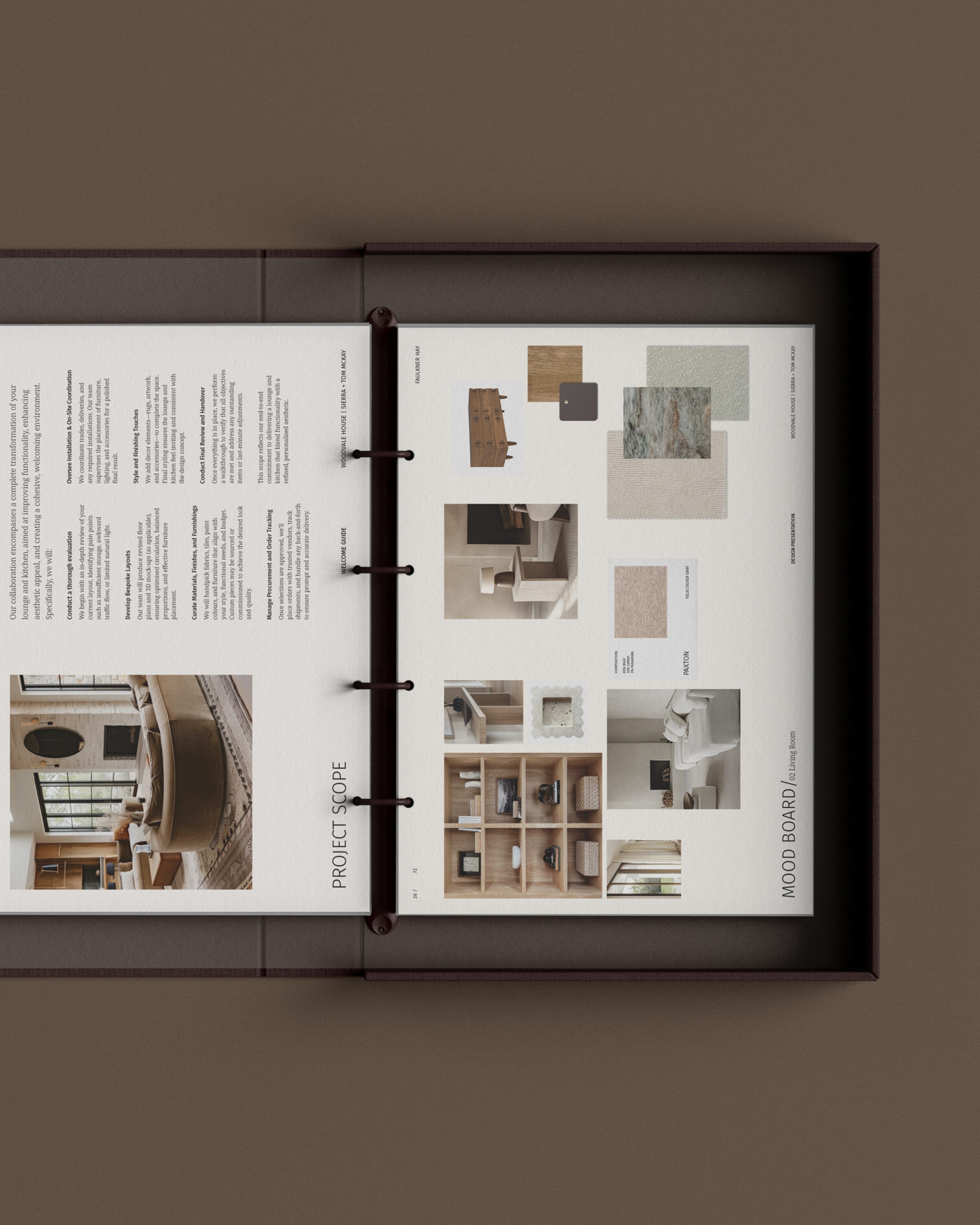Effective Storytelling for Better Design Presentations

Everyone's favourite presentation advice: "Master the art of STORYTELLING!"
Usually dispensed by people who've never had to sell a sofa to a sceptical client with a Pinterest board full of contradictory inspirations and a spouse who "just doesn't see the vision."
Let's be clear: storytelling doesn't mean channelling your inner Hemingway or turning your mood board into a novel.
Your client isn't looking for a design odyssey. They're looking for a dining room that impresses their mother-in-law without bankrupting them.
Here's what storytelling actually means in our world:
Making your design choices feel so logical that your client nods and says, "Of course. That makes perfect sense." No literary prizes required.
The problem with most design presentations isn't that they lack creativity. It's that they fail to create a coherent narrative that connects beautiful objects to real human needs.
The Actual Presentation Flow You Need
If you're tired of hearing "I don't know... something feels off" after you've poured your soul into a presentation, here's the approach that will transform your client communications:
- Start with their pain: "My hallway feels chaotic and unwelcoming"
- Acknowledge constraints: "The narrow space and budget limitations mean..."
- Reveal your thought process: "We explored three approaches before landing on..."
- Connect solutions to goals: "This layout gives you the storage and flow you prioritised"
This isn't just filling in a formula—it's about creating an experience. Your presentation isn't a museum where clients wander aimlessly. It's a private tour where you've strategically placed each revelation exactly where it needs to be.
And removed all the gift shops.
The Translation Guide to Client Feedback
When clients say: "I don't know... something feels off."
Translation: "You've shown me beautiful things without explaining how they solve my actual problem."
When clients start requesting random changes or fixating on minor details, it's almost always because they don't see how your choices address their core concerns. They're trying to fix a narrative problem with a design solution.
The Magic That Happens When You Get This Right
Put this approach into practice, and watch what happens:
- Your client stops asking for random changes
- They start defending your design to their spouse
- And they finally say those magic words: "It's like you're inside my head."
Storytelling isn't about performance—it's about creating such clear connections between your client's problems and your solutions that approving your design feels like the most natural decision in the world.
It's the difference between "Here are some pretty things I picked" and "This is why each element matters to your life."
Turn Your Next Presentation Into a Client-Converting Story
If you're ready to transform your design presentations from showcases into storytelling experiences, our professionally designed presentation templates give you the flow you need to guide clients through a compelling narrative.
Each template is built around the proven approach above, making it easy to showcase your design vision while creating that magical "of course" moment with clients.





